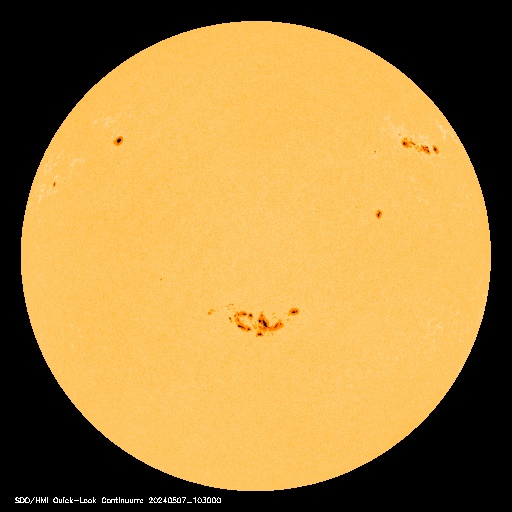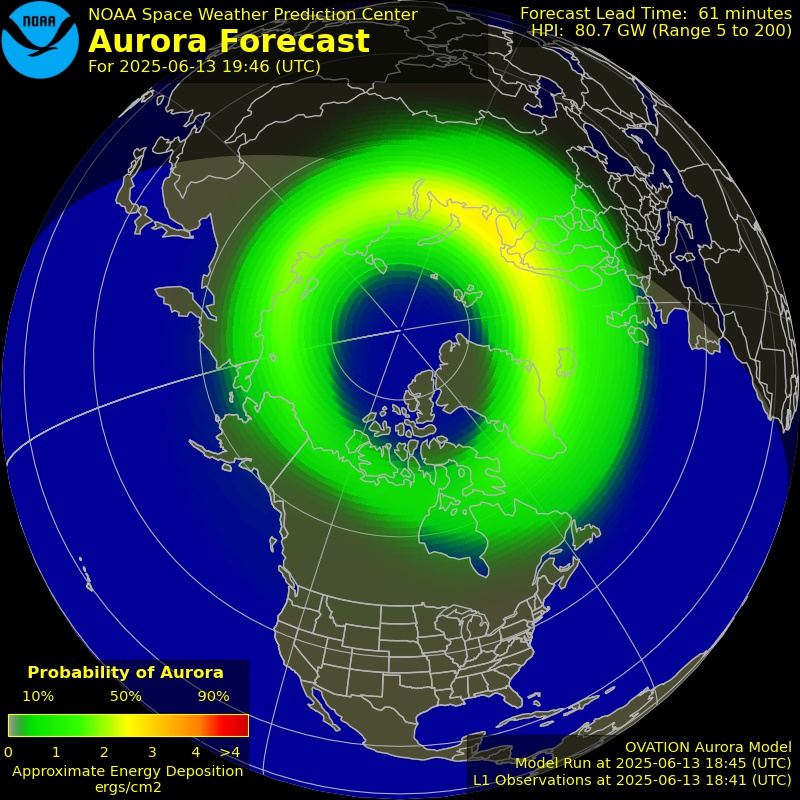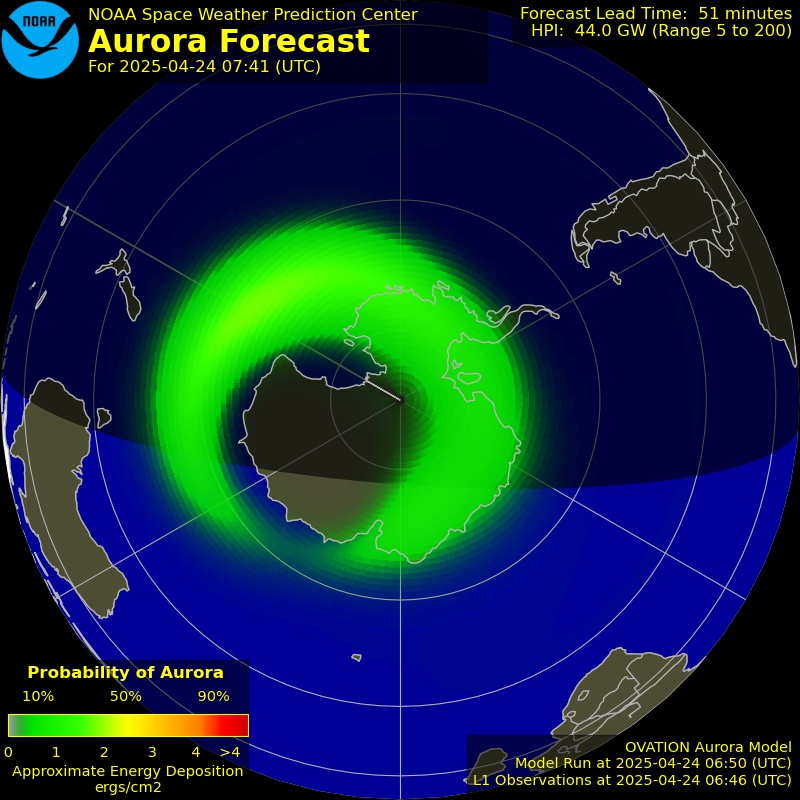Prompted by a recent increase in solar activity, more than a hundred researchers and government officials are converging on Helwan, Egypt, to discuss a matter of global importance: storms from the sun. The “First Workshop of the International Space Weather Initiative (ISWI)†meets Nov. 6th through 10th and is convened by the United Nations, the National Aeronautics and Space Administration (NASA), and the Japan Aerospace Exploration Agency (JAXA).
“Strong solar storms can knock out power, disable satellites, and scramble GPS,” says meeting organizer and ISWI executive director Joe Davila of NASA’s Goddard Space Flight Center. “This meeting will help us prepare for the next big event.”

Click on the image to view a complete poster advertising the First Workshop of the International Space Weather Initiative in Helwan, Egypt.[more]
A key problem organizers hope to solve is a gap–many gaps, actually—in storm coverage around our planet. When a big storm is underway, waves of ionization ripple through Earth’s upper atmosphere, electric currents flow through the topsoil, and the whole planet’s magnetic field begins to shake.
“These are global phenomena,” says Davila, “so we need to be able to monitor them all around the world.”
Industrialized countries tend to have an abundance of monitoring stations. They can keep track of local magnetism, ground currents, and ionization, and provide the data to researchers. Developing countries are where the gaps are, particularly at low latitudes around Earth’s magnetic equator.
Although space weather is usually associated with Earth’s polar regions–think, “Northern Lights”–the equator can be just as interesting. For example, there is a phenomenon in Earth’s upper atmosphere called the “equatorial anomaly.” It is, essentially, a fountain of ionization that circles the globe once a day, always keeping its spout toward the sun. During solar storms, the equatorial anomaly can intensify and shape-shift, bending GPS signals in unexpected ways and making normal radio communications impossible.
“International cooperation is essential for keeping track of the equatorial anomaly,” he adds.  “No single country can do it alone.â€
It’s no coincidence that the inaugural meeting of the ISWI is being held in Egypt, an equatorial country. Of 30 nations sending representatives to the ISWI, more than two-thirds are clustered around the magnetic equator. This could lead to a revolution in studies of low-latitude space weather.

A map of ISWI-brokered space weather monitoring stations. Prospective participants should visit the ISWI home page to learn more about available projects and how to become involved.
There is much to do beyond the equator, too. During the meeting, researchers and students will learn how they can set up monitoring stations for cosmic rays, ground currents, magnetic storms, and auroras. There’s a phenomenon for every latitude and level of expertise.
“We are offering a whole buffet of research opportunities,” says Davila.
Researchers who miss the first meeting will get many more chances. The International Space Weather Initiative is an ongoing program with get-togethers planned on an annual basis at different spots around the world. The next meeting will be held in Nigeria in November 2011.
No country is too remote, too small, or too poor to participate. Indeed, notes Davila, “the smallest most out of the way places are often where data are needed most. Everyone is invited.”
Interested? Details and contact information may be found at the ISWI home page: http://iswi-secretariat.org/
[phpbay](space weather|solar storm|solar telescop*|solar filter*), 100, “”, “”[/phpbay]
[phpbay]””, 100, “74927”, “”[/phpbay]
[phpbay]””, 100, “74922”, “”[/phpbay]
Space Weather Videos:
[tubepress mode=”tag” tagValue=”space weather”]
Amazon.com BestSellers
| [phpzon keywords=”space weather” searchindex=”Books” num=”3″] |
Filed under: Astronomy & Space Weather




















This morning I was awoken by my alarm clock powered by electricity generated by the public power monopoly regulated by the US Department of Energy.
I then took a shower in the clean water provided by the municipal water utility.
After that, I turned on the TV to one of the FCC regulated channels to see what the National Weather Service of the National Oceanographic and Atmospheric Administration determined the weather was going to be like using satellites designed, built, and launched by the National Aeronautics and Space Administration. I watched this while eating my breakfast of US Department of Agriculture inspected food and taking the drugs which have been determined as safe by the Food and Drug Administration.
At the appropriate time as regulated by the US Congress and kept accurate by the National Institute of Standards and Technology and the US Naval Observatory, I get into my National Highway Traffic Safety Administration approved automobile and set out to work on the roads built by the local, state, and federal Departments of Transportation, possibly stopping to purchase additional fuel of a quality level determined by the Environmental Protection Agency, using legal tender issued by the Federal Reserve Bank. On the way out the door I deposit any mail I have to be sent out via the US Postal Service and drop the kids off at the public school.
Then, after spending another day not being maimed or killed at work thanks to the workplace regulations imposed by the Department of Labor and the Occupational Safety and Health Administration, I drive back to my house which has not burned down in my absence because of the state and local building codes and the fire marshal's inspection, and which has not been plundered of all its valuables thanks to the local police department.
I then log onto the Internet which was developed by the Defense Advanced Research Projects Administration and post on freerepublic and fox news forums about how SOCIALISM in medicine is BAD because the government can't do anything right.
I like the valuable info you provide in your articles. I’ll bookmark your weblog and check again here regularly. I am quite sure I’ll learn many new stuff right here! Good luck for the next!
The 50th anniversary of America’s first manned spaceflight is being commemorated with the issuance of two stamps. The stamps go on sale May 4.
One stamp salutes the National Aeronautics and Space Administration’s (NASA) Project Mercury, America’s first manned spaceflight program, and NASA astronaut Alan Shepard’s historic flight on May 5, 1961, aboard the spacecraft Freedom 7.